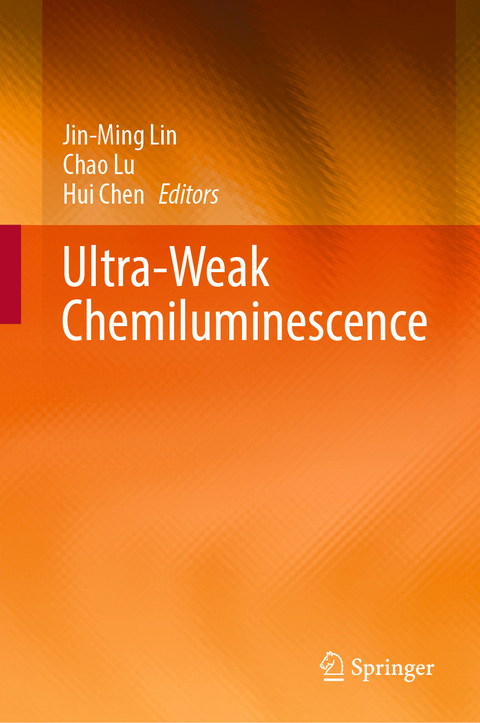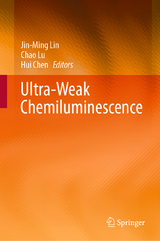Ultra-Weak Chemiluminescence
Springer Berlin (Verlag)
978-3-662-64839-1 (ISBN)
Professor Jin-Ming Lin was born in 1963. He received his B.A. degree from Fuzhou University in 1984 and received a Ph.D. degree in applied chemistry at Tokyo Metropolitan University in 1997. He had studied and worked in Showa University and Tokyo Metropolitan University during 1992-2002. He was selected as "100 Talented Researcher Program" for Chinese Academy of Sciences, and obtained the Fund for Distinguished Young Scholars of National Natural Science Foundation of China in 2001. He had been a full professor in Research Center for Eco-Environmental Sciences, Chinese Academy of Science during 2002-2004. He is currently a full professor of Department of Chemistry, Tsinghua University since 2004, and was selected as Cheung Kung Scholars Professor of Ministry of Education, China at 2008. He is a member of Supervisor Committee of Chinese Chemical Society since 2019 to now, a member of General Council of China Association for Instrumental Analysis since 2016 to now. a member of General Council of Chinese Society of Micro-Nano Technology since 2022. He is a Fellow of Royal Chemical Society, the deputy directors of the Committee of Mass Spectrometry and the Committee of Analytical Chemistry in Chinese Chemical Society, and the deputy director of the Committee of Pharmaceutical Analytical Chemistry in Chinese Pharmaceutical Association. Dr. Lin is a contributing editor of Trends in Analytical Chemistry (Elsevier), associate editors of Luminescence(Wiley), Journal of Pharmaceutical Analysis (Elsevier) and Chinese Chemical Letter (CCS & Elsevier), editorial boards of five international and seven national journals. He received several awards for his contributions in chemiluminescence and separation science. He is the author and co-author of 418 original research papers published in international journals, 45 reviews, 5 books and 51 patents. His current research is focused on cell analysis, microfluidics, and chemiluminescence.
Chapter 1. Introduction of ultra-weak chemiluminescence.- Chapter 2. Ultra-weak chemiluminescence from decomposition of peroxymonocarbonate.- Chapter 3. Ultra-weak chemiluminescence from decomposition of peroxynitrous.- Chapter 4. Ultra-weak chemiluminescence system of reactive nitrogen species.- Chapter 5. Ultra-weak Chemiluminescence arising from the decomposition of peroxomonosulfite.- Chapter 6. Ultra-weak chemiluminescence from reaction of sulfite and hydrogen peroxide.
| Erscheinungsdatum | 05.03.2022 |
|---|---|
| Zusatzinfo | X, 237 p. 166 illus., 76 illus. in color. |
| Verlagsort | Berlin |
| Sprache | englisch |
| Maße | 155 x 235 mm |
| Gewicht | 496 g |
| Themenwelt | Naturwissenschaften ► Chemie ► Analytische Chemie |
| Naturwissenschaften ► Chemie ► Physikalische Chemie | |
| Technik | |
| Schlagworte | Chemiluminescence Mechanism • Chemiluminescen Resonance Energy Transfer • flow injection analysis • Nanoparticle-Enhanced Chemiluminescence • Ultra-Weak Chemiluminescence |
| ISBN-10 | 3-662-64839-3 / 3662648393 |
| ISBN-13 | 978-3-662-64839-1 / 9783662648391 |
| Zustand | Neuware |
| Informationen gemäß Produktsicherheitsverordnung (GPSR) | |
| Haben Sie eine Frage zum Produkt? |
aus dem Bereich




